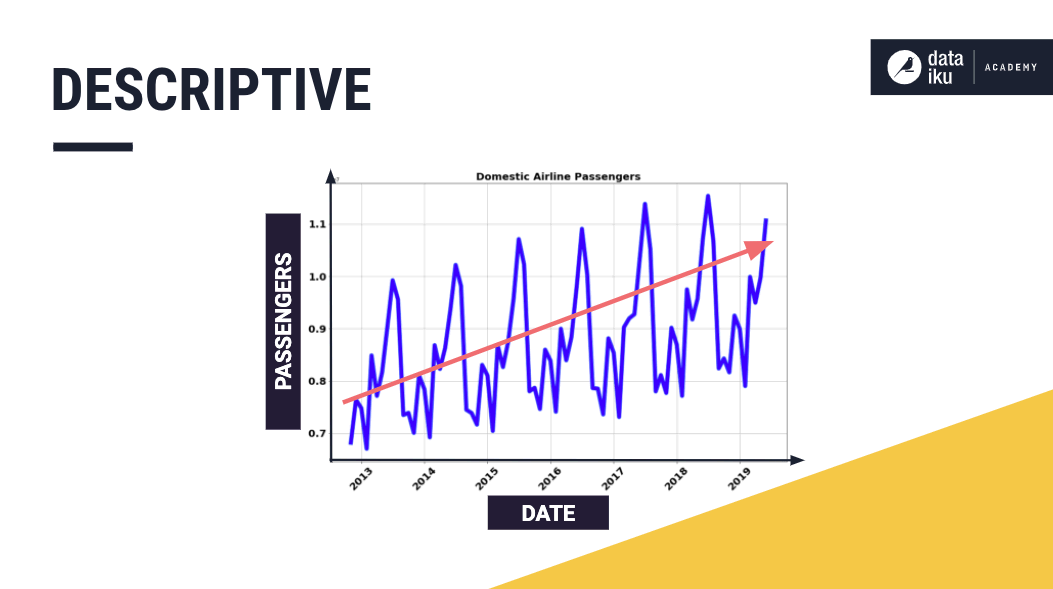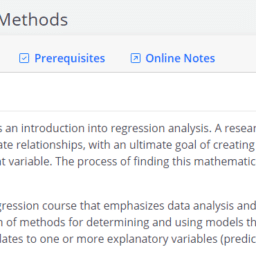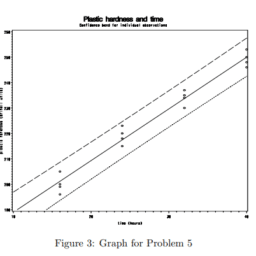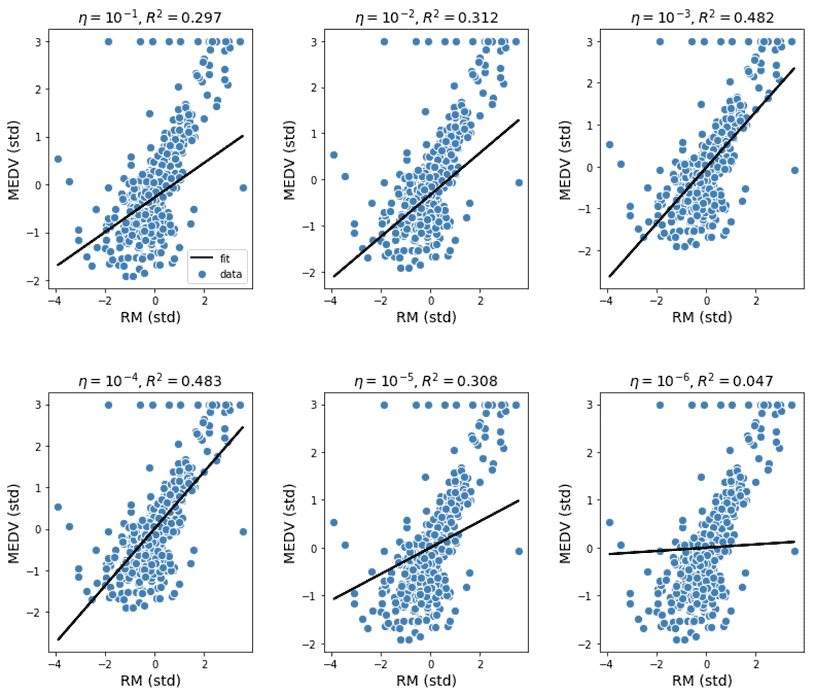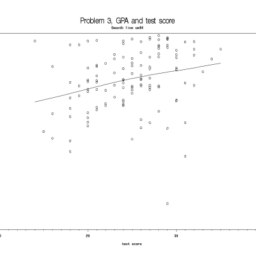MY-ASSIGNMENTEXPERT™可以为您提供stat.psu.edu STAT501 Regression Analysis回归分析课程的代写代考和辅导服务!
这是埃伯利理学院回归分析课程的代写成功案例。
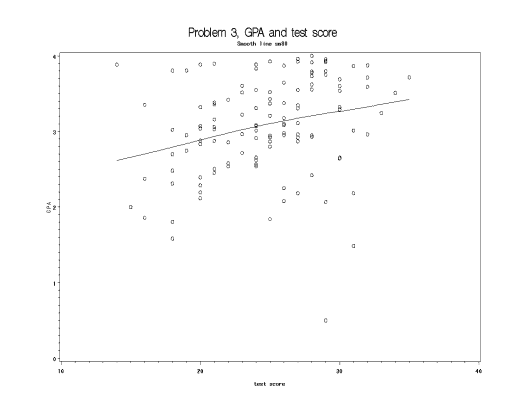
STAT501课程简介
This graduate level course offers an introduction into regression analysis. A researcher is often interested in using sample data to investigate relationships, with an ultimate goal of creating a model to predict a future value for some dependent variable. The process of finding this mathematical model that best fits the data involves regression analysis.
STAT 501 is an applied linear regression course that emphasizes data analysis and interpretation. Generally, statistical regression is collection of methods for determining and using models that explain how a response variable (dependent variable) relates to one or more explanatory variables (predictor variables).
Prerequisites
This graduate level course covers the following topics:
- Understanding the context for simple linear regression.
- How to evaluate simple linear regression models
- How a simple linear regression model is used to estimate and predict likely values
- Understanding the assumptions that need to be met for a simple linear regression model to be valid
- How multiple predictors can be included into a regression model
- Understanding the assumptions that need to be met when multiple predictors are included in the regression model for the model to be valid
- How a multiple linear regression model is used to estimate and predict likely values
- Understanding how categorical predictors can be included into a regression model
- How to transform data in order to deal with problems identified in the regression model
- Strategies for building regression models
- Distinguishing between outliers and influential data points and how to deal with these
- Handling problems typically encountered in regression contexts
- Alternative methods for estimating a regression line besides using ordinary least squares
- Understanding regression models in time dependent contexts
- Understanding regression models in non-linear contexts
STAT501 Regression Analysis HELP(EXAM HELP, ONLINE TUTOR)
A regression analysis relating test scores $(Y)$ to training hours $(X)$ produced the following fitted question: $\hat{y}=25-0.5 x$.
(a) What is the fitted value of the response variable corresponding to $x=7$ ?
Solution: The fitted value at $x=7$ is
$$
\hat{y}=25-(0.5)(7)=25-3.5=21.5 \text {. }
$$
(b) What is the residual corresponding to the data point with $x=3$ and $y=30$ ?
Solution: The fitted value corresponding to the data point with $x=3$ is
$$
\hat{y}=25-(0.5)(3)=25-1.5=23.5 .
$$
The residual corresponding to the data point with $x=3$ and $y=30$ is thus
$$
e_i=30-23.5=6.5 .
$$
(c) If $x$ increases 3 units, how does $\hat{y}$ change?
Solution: For increase of 1 in $x, \hat{y}$ changes by the slope. Therefore, if $x$ increase by 3 units, $\hat{y}$ will decrease by 3 times the slope, i.e. by $(3)(-0.5)=-1.5$.
(d) An additional test score is to obtained for a new observation at $x=6$. Would the test score for the new observation necessarily be 22? Explain.
Solution: Not necessarily. The new observation is a random variable from a normal distribution with estimated mean 22 . So you would not likely see the observation 22 .
(e) The error sums of squares $(S S E$ ) for this model was found to be 7 . If there were $n=16$ observations, provide the best estimate for $\sigma^2$.
Solution: The estimate of $\sigma^2$ is given by
$$
s^2=M S E=\frac{S S E}{d f_E}=\frac{S S E}{n-2}=\frac{7}{14}=0.5 .
$$
(f) Rewrite the regression equation in terms of $x^$ where $x^$ is training time measured in seconds. Show that your answer makes sense, i.e., gives the same predictions as the original equation (an example is sufficient).
Solution: If $x$ is the time in hours and $x^$ is the time in seconds, then $x^=60^2 x$. Therefore, $x=x^* / 3600$. The regression equation $\hat{Y}=25-0.5 x$ thus becomes $\hat{y}=25-0.5 \frac{x^}{3600}=25-0.0001389 x^$ (approximately).
For example, if $x=2$ hours, then $x^*=7200$ seconds. The original equation would give $\hat{y}=25-0.5(2)=24$, and the equation would give $\hat{y}=15-$ $0.0001389(24)=14.99667$. Thus, except for rounding error, the two equations give the same answer.
Explain the different between the following two equations:
$$
\begin{aligned}
& \hat{Y}=b_0+b_1 X \
& Y=\beta_0+\beta_1 X+\epsilon .
\end{aligned}
$$
Solution: The first equation is the fitted regression line which describes the linear relationship between the mean of the response variable (fitted value) and the explanatory variable $X$. The second equation is the linear model which describes the relationship between the observed $(X, Y)$ pairs. Not all the pairs will fall directly on a line as they will in the first equation, as indicated by the error term. In the first equation, the values $b_0$ and $b_1$ are known values obtained from the data, while in the second equation, the parameters $\beta_1$ and $\beta_0$ are unknown.
For this problem, use the “grade point average” data described in NKNW Problem #1.19. The data are on the disk that accompanies the text and can also be found on the class web site (CHO1PR19.DAT). Make sure you understand which column is $X$ and which is $Y$ and read in the data accordingly. See Topic 1 or nknw060. sas for an example of how to read in a data file.
(a) Plot the data using proc gplot. Include a smoothed function on the plot by preceding the plot statement with “SYMBOL1 $i=$ smNN” where NN is a number between 1 and 99. Note that larger numbers cause greater smoothing. Make sure to indicate the smoothing number in the title of the plot. Is the relationship approximately linear?
Solution: The relationship looks approximately linear. (See graph).
(b) Run a linear regression to predict GPA based on the entrance exam. Give the complete ANOVA table for this regression.
Solution: The included table shows that the linear model does indeed explain a significant portion of the variability in the response.
(c) Give a point estimate and a $95 \%$ confidence interval for the slope and intercept and interpret each of these in words.
Solution: Based on the SAS output (see file), the point estimate for the slope is $b_1=0.0388$. This is our best least-squares estimate for the slope of the regression line. The $95 \%$ CI for $\beta_1$ is the interval $[0.0135,0.0641]$. We are $95 \%$ confident that $\beta_1$ is in the interval.
In addition, the point estimate for $\beta_0$, the intercept, is 0.321 , estimated via least squares estimation. The interval $[1.479,2.750]$ is the $95 \%$ confidence interval for this parameter. We are $95 \%$ confident that the true value $\beta_0$ is in this interval.
(d) Would it be reasonable to consider inference on the intercept for this problem? Please provide justification for your answer.
Solution: It is doubtful that inference on $\beta_0$ would be reasonable in this problem. The interpretation of $\beta_0$, if any, would be the mean GPA obtained by someone with a score of 0 on the test. However, none of the observations in our sample had test scores below 3.9. Therefore, it’s difficult to say that the linear relationship would continue for lower test scores; in fact, we can be certain that it would not, since a negative GPA is not possible.

MY-ASSIGNMENTEXPERT™可以为您提供STAT.PSU.EDU STAT501 REGRESSION ANALYSIS回归分析课程的代写代考和辅导服务!


